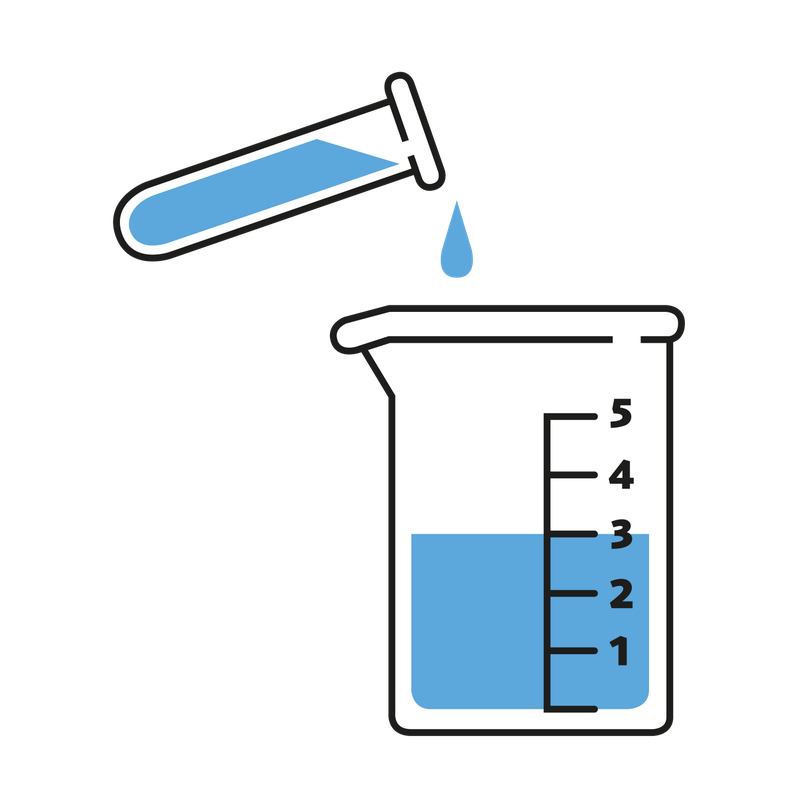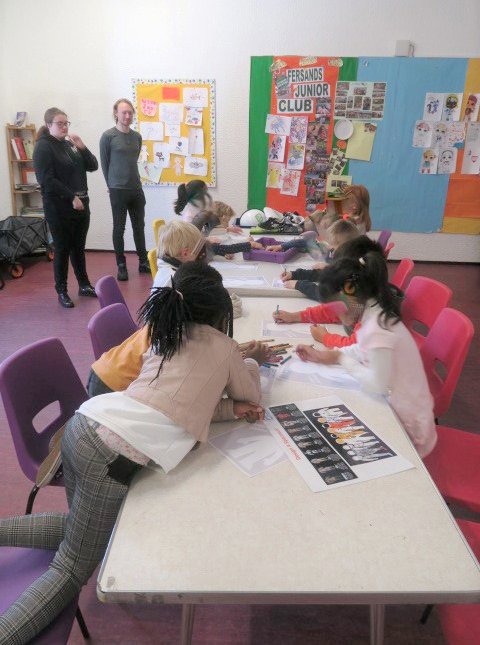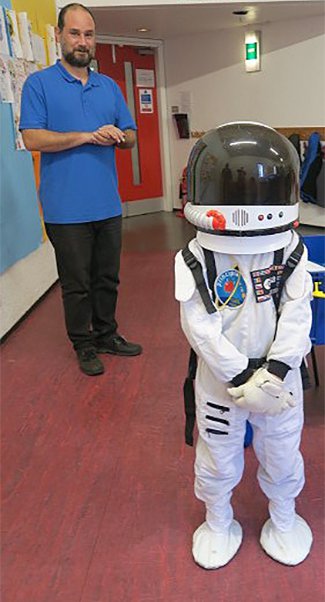Aberdeen Science Centre and the Fersands and Fountain Community Project
Aberdeen Science Centre partnered with Fersands and Fountain Junior Club, part of the Fersands and Fountain Community Project, a voluntary organisation and charity that is based in the Woodside area of Aberdeen.
Who did you work with?
Our community partner was Fersands and Fountain Junior Club. This is part of the Fersands and Fountain Community Project, a voluntary organisation and charity that is based in the Woodside area of Aberdeen. Fersands and Fountain provides advice, education and support to the most vulnerable and hard to reach families in the areas covering Woodside, Tillydrone and Seaton.
Had you worked together before?
Prior to the initiation of EYU4, we organised a weekly Science club with the Fersands and Fountain Junior club. As part of this partnership, Aberdeen Science Centre provided 16 weeks of Science related activities to Fersands and Fountain Junior Club. Activities over the first 8 weeks were targeted to children between the ages of 4-7 (P1-P3), while the following 8 weeks were focused around the interests of children between 8-13 years old (P4-7). This series of engagements enabled our team to develop an excellent working relationship with Fersands and Fountain practitioners and young people alike. This in turn empowered our teams to work closely together and to facilitate the young peoples’ aims, interests and curiosities, while engaging with the complex topics tackled in EYU4. At the same time, having previously engaged numerous times with the same young people, meant that we needed to avoid duplication, while also including their favourite past activities.

What goals, values or priorities did you share with your partner that meant you worked well together?
Our team continues to view the Fersands and Fountain practitioners as some of our closest friends. We are very happy to see both our teams working on close partnerships and inspiring young minds to engage with Science. This partnership has been extremely easy to build on, as our teams share our passion for what we do, as well as supporting the local community in Tillywoodsea (Tillydrone, Woodside and Seaton). Furthermore, our practitioners’ integrity meant that we are able to hold open and honest discussions about the delivery of different sessions, as well as proactively improving the quality of our engagements, in response to our participants’ interests, aims and aspirations.
Last but not least, working with the same participants over many sessions, meant that our teams could monitor progression and immediately respond to individual participants’ curiosity. This empowered our teams to make science engagements directly relevant to our participants’ daily lives. This was particularly valuable in terms of increasing the motivation to engage with the activities, as well as working collectively to increase our practitioners’ and participants’ Science Capital.
Can you summarise the aims of your project delivery in 2(ish) sentences?
Our aims in EYU4 were:
- To explore what co-development means in the context of proactively responding to individuals’ curiosities and culturing their sense of exploration.
- To inspire a lifelong interest for space science and the cutting edge Science and Technology happening at STFC, by creating engaging experiences.

How co-produced was your programme?
- Information shared (the offer is decided and provided by you as the lead partner and people join to hear information)
- Consultation (the community partner/participants choose from a range of options, involving listening, feedback and discussion, but broader project objectives and delivery are led by you)
- Deciding together (community partners/participants support the creation and design phase, bringing new options and joint decision-making. Delivery and evaluation/reporting is led by you as the lead partner)
- Acting together (involvement of community partner/participant at each stage – from the planning and design, to the delivery and evaluation – with shared decision-making that forms a partnership to carry out the full programme)
- Supporting independent community interest (supporting partner agency, including offered funding, advice, and support to develop the independent ideas and agendas of the community partner).
Can you note down some of the benefits and challenges to working this way?
The biggest benefit on working this way is that our community participants proactively inform the development of our Science engagements. By making Science directly relevant to their daily lives, we witnessed an increased motivation and interest to get involved and learn. It is worth mentioning at this point, that a limitation of working in this way is that it is quite hard to respond to individuals’ interests in a single session. As a result, we are very keen to know how other science centres approached the co-development aspect of this project, as their approach(es) might enable us to be immediately responsive to all our audiences.
The biggest challenge when working in this way, is that the Science communicator needs to be extremely well prepared to tackle a variety of topics in a given area of Science. From personal experience, discussions around area 54 and questions about gravitational waves were far beyond the limits of my knowledge. In these occasions, I think that it is very important to openly accept our personal limits and use this as an opportunity for everyone to explore the topic further as a team.
What was the science link?
Together with all materials provided by ASDC, our team proactively promoted STFC’s cutting edge science and technology. This was done through excerpts of the Fascination magazine and the STFC website. These resources were extremely useful for promoting relevant career pathways, as well as the skills needed to a particular profession. More importantly, by showing young people the links to UK-based Science and Technology, we hope that we increased the interest of our participants to know more.
I loved making things and learning about Space.

What happened?
Our team used EUY4 as an opportunity to explore the topic of co-development, as well as inspiring young people to learn about the UK Space Science and Technology sector. We embarked on EYU4 with a consultation session with the Fersands and Fountain practitioner and some parents and children that were invited to join the sessions. Surprisingly, the trusting relationship that we had developed with Fersands and Fountain was a slight challenge. This was because they completely trusted our team to deliver any space related activities. To a large extend, this was also due to the fact that our audience had limited knowledge of Space Science, and this limited the choice of activities. In order to counter this limitation, our team loosely themed each session around these specific topics.
The topics covered were 1. Space Travel, 2. Solar System, 3. Living in Space, 4. Danger from Space, 5. Childrens’ choice. The idea behind this was that we could explore each topic on weeks 1-4 and the young people would choose their favourite activities for the last session. It is worth mentioning that session 3 was poorly attended, so session 4 was a combination of “living in Space” and “Danger from Space”.
Each week, we adopted the “whole load of stuff” approach, where we would have a lot of activities around each topic. We would then explain what each of the activities were and we would follow the young peoples’ curiosity around each session. For example, on week 1, we discussed material science and making a spacesuit, we designed our own rockets and had a launching challenge and finally, we explored astronauts’ training and diet in space. (Each topic had several activities attached and the activities actually used were the ones that young people chose on the day). This process was extremely interesting and informative for our team.
We now feel a lot more aware of how to respond to our audiences’ curiosity and enhance their sense of exploration. More importantly, this process enabled our team to not rely heavily on scripts and empowered us to not promote ourselves as the “fountains of knowledge”. This has also informed our script development process. Namely, our scripts are not as rigid as they were in the past, and we use them as loose guidelines, rather than scripts. By adopting research and child-led pedagogies, we have witnessed a vast improvement in our audiences enjoyment. Furthermore, our team feels a lot more confident to adopt each session on the spot and to put our audience in the centre of each engagement.
I am very excited about learning more about Science and the planets.

What challenges might lie in wait for someone wanting to replicate this project?
From personal experience, the biggest challenge was handing the control of the sessions over to our audience. The beginning of each session was nerve-racking, as I always felt unprepared. However, as soon as each engagement started, the conversations with the participants and the activities themselves made each session an extremely pleasant and informative experience. I think that as science communicators, we had learnt to rely heavily on our scripts.
This project enabled myself and my team to enhance our audience participation and as a result, increase the quality of our interactions and make each session a fantastic experience for practitioners and audiences alike.
To show how powerful this process was, this is an example of practitioner’s feedback I received today. This was a series of activities unrelated to EYU4, but I hope that our learning from EYU4 is evident in the practitioner’s words: “It’s been so amazing to see the kids working with the Aberdeen Science Centre over the school term, giving them the opportunity to try new experiments and activities has been fantastic. The children have really enjoyed the opportunity to see some home science in action, and having the workshops tailored to their feedback has really encouraged them in not only learning more about the respective STEM fields they’re interested in, but has shown them science can be fun too. When the first thing the kids do when being picked up is to run to parents and tell them what science experiments they’ve been doing, and showing off their handiwork, I know they’ve left the Youth Club having had a memorable experience that’s not only shown them science can be done by anyone, but that it’s fun too.”
If you put Neil Armstrong’s name backwards, it spells ALIEN!
Were there any surprises?
Session 4 was a real revelation to myself. The premise of this session was that we would consider any dangers that could come from space. After selecting the biggest danger, our team had 1 hour to develop the technology that would save Earth. The reason we chose “Dangers from Space” for this session was so that our audience would be encouraged to be creative. We thought that such a vague topic would encourage young people to link information from previous sessions and apply it to problem solve the questions generated in this session.
Before entering this session, I did expect that young people would need a lot of guidance. Thankfully, the young people proved me wrong, by not only bringing some incredible ideas to the conversation, but also devising ingenious solutions to completely hypothetical scenarios. I think that my personal learning from this session was not to make any assumptions prior to an engagement and to actually rely on my audience’s knowledge and interests for shaping each session. This, together with the benefit of being able to reflect after each session, meant that my learning has stayed with me for a very long time and this learning now informs everything that I do at Aberdeen Science Centre.
How did you capture/measure the impact for this project?
Part of our participation in EYU4 was understanding our audiences’ approach to different feedback forms. As such, we tried to use as many forms as possible. Namely, in session 1, we asked participants to fill in the “feelings about Science” form. In the second session, we used the emoji form, while in session 3, we used the “what does “science” mean to you form”. Finally, we used the “draw and avatar” and “feelings about science” forms in sessions 4 and 5 respectively. Our team found using the different forms very informative and I think that young people enjoyed using such varied feedback mechanisms. Furthermore, we found that word of mouth often provides the best feedback, as it is not limited to a number of choices. We have used this information to shape our feedback and evaluation processes at Aberdeen Science Centre. We are currently evaluating digital methods, that allow people to vote through a mobile device like a mobile phone. Moreover, we try to give our audience the freedom to describe each session in their own words. So for example, a couple of questions that we routinely use are: 1. “How would you describe this session to a friend” and 2. “What three words would you use to describe this session”. These questions were developed through our consultation and we think that they are a “game changer”. By allowing people to freely describe their experience, we appear to be getting much more honest and constructive feedback by our audiences. Regarding the impact of this project as a whole, I am happy to say that Fersands and Fountain is one of our closest partners and the way we approached EYU4 with Fersands has informed how we approach all community engagements. For example, we make a point of inviting Fersands and Fountain to Aberdeen Science Centre regularly. On community open days, we invite the families and we are very happy to see that the majority of people invited actually visiting Aberdeen Science Centre. (In the past, invitation to the same people would result in a maximum of one third visiting Aberdeen Science Centre). More importantly, we make a point of cultivating our excellent relationship, by having several sessions with Fersands and Fountain each year. This way, we can still support young people’s development and monitor how their overall engagement with Science changes over time.
Where is the long-lasting change?
Our team strongly believes that Explore Your Universe 4 is already having a strong legacy. Firstly, planning for our participation to EYU4 was done alongside Almas from Fersands and Fountain Junior Club. Up to that point, I had worked with Almas over several weeks (16), delivering a weekly Science Club at Fersands and Fountain. Almas was the maternity cover for Magda, who was the practitioner in charge, when the EYU4 sessions were actually delivered. This meant that we built a strong relationship with both practitioners from Fersands and Fountain Junior Club. More importantly, EYU4 sessions took place after Fersands and Fountain lost a significant portion of their funding. This meant that funding from EYU4 ensured that our relationship was ongoing, as well as inspiring young people to co-develop a Science engagement about Space Science.
In terms of Aberdeen Science Centre’s operations, we are now a lot more mindful about the communities we engage with. For example, we always prioritise the quality of engagement and we always pursue more than one engagments with every community group (whenever possible). More importantly, we now invest a lot of time and effort in building relationships with our communities. This is done for our team to gain more information on individual participants’ interests, aims and curiosities. This in turn, enables our team to deliver tailormade activities that promote the relevance of science in daily lives, spark curiosity and facilitate their sense of exploration. Last but not least, EYU4 has empowered our team to look introspectively and to put communities on the “driving seat”. Resources like the inclusion wheel, training our whole team on the principles of co-development and the conversations started in response to these initiatives were priceless in this respect.
Please see below the Evaluation Report: Relationship + Engagement = Impact, Lessons learned from the evaluation of Explore Your Universe 4 written by Jen DeWitt.
